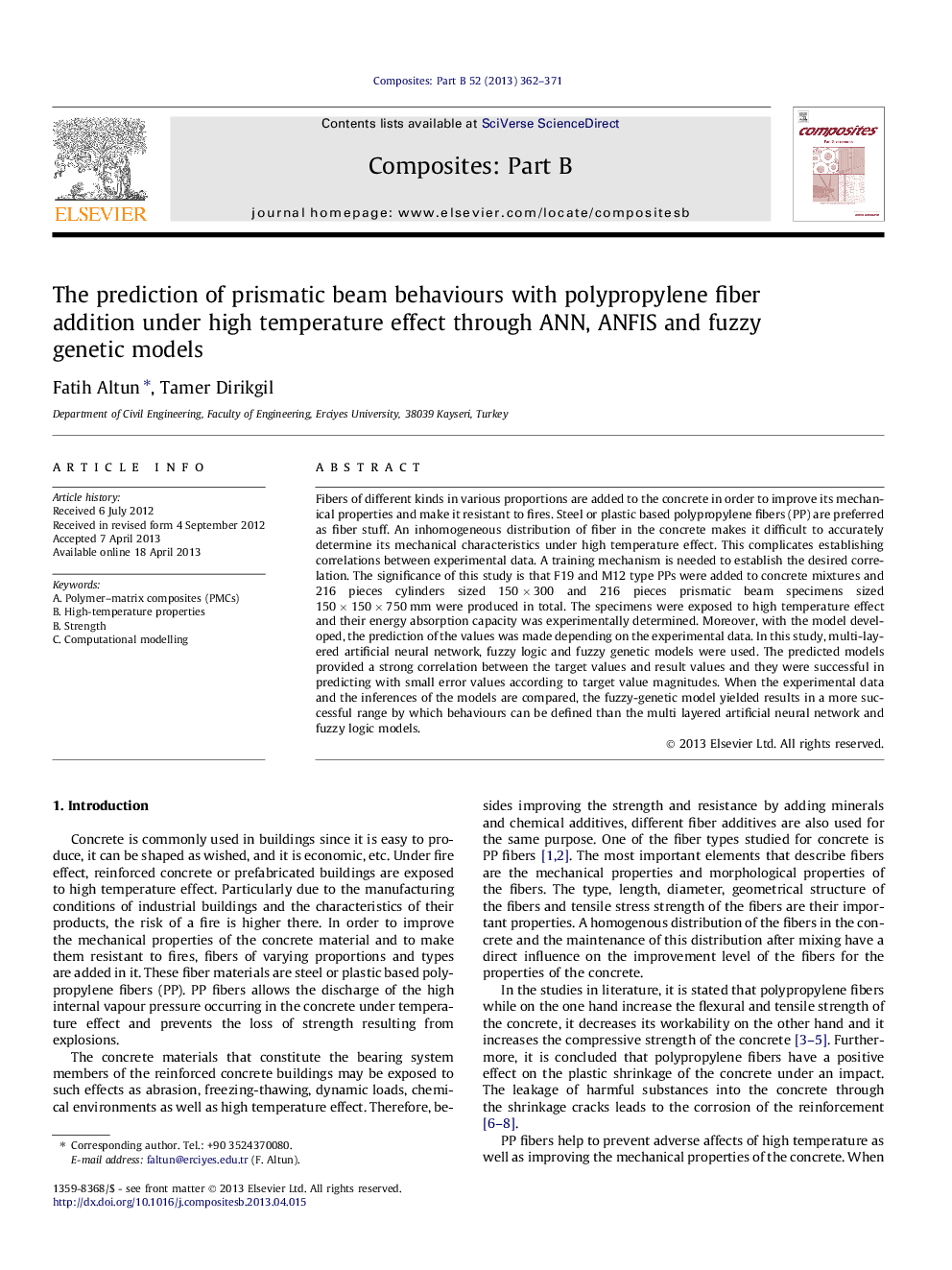| Article ID | Journal | Published Year | Pages | File Type |
|---|---|---|---|---|
| 7213908 | Composites Part B: Engineering | 2013 | 10 Pages |
Abstract
Fibers of different kinds in various proportions are added to the concrete in order to improve its mechanical properties and make it resistant to fires. Steel or plastic based polypropylene fibers (PP) are preferred as fiber stuff. An inhomogeneous distribution of fiber in the concrete makes it difficult to accurately determine its mechanical characteristics under high temperature effect. This complicates establishing correlations between experimental data. A training mechanism is needed to establish the desired correlation. The significance of this study is that F19 and M12 type PPs were added to concrete mixtures and 216 pieces cylinders sized 150Â ÃÂ 300 and 216 pieces prismatic beam specimens sized 150Â ÃÂ 150Â ÃÂ 750Â mm were produced in total. The specimens were exposed to high temperature effect and their energy absorption capacity was experimentally determined. Moreover, with the model developed, the prediction of the values was made depending on the experimental data. In this study, multi-layered artificial neural network, fuzzy logic and fuzzy genetic models were used. The predicted models provided a strong correlation between the target values and result values and they were successful in predicting with small error values according to target value magnitudes. When the experimental data and the inferences of the models are compared, the fuzzy-genetic model yielded results in a more successful range by which behaviours can be defined than the multi layered artificial neural network and fuzzy logic models.
Keywords
Related Topics
Physical Sciences and Engineering
Engineering
Engineering (General)
Authors
Fatih Altun, Tamer Dirikgil,
